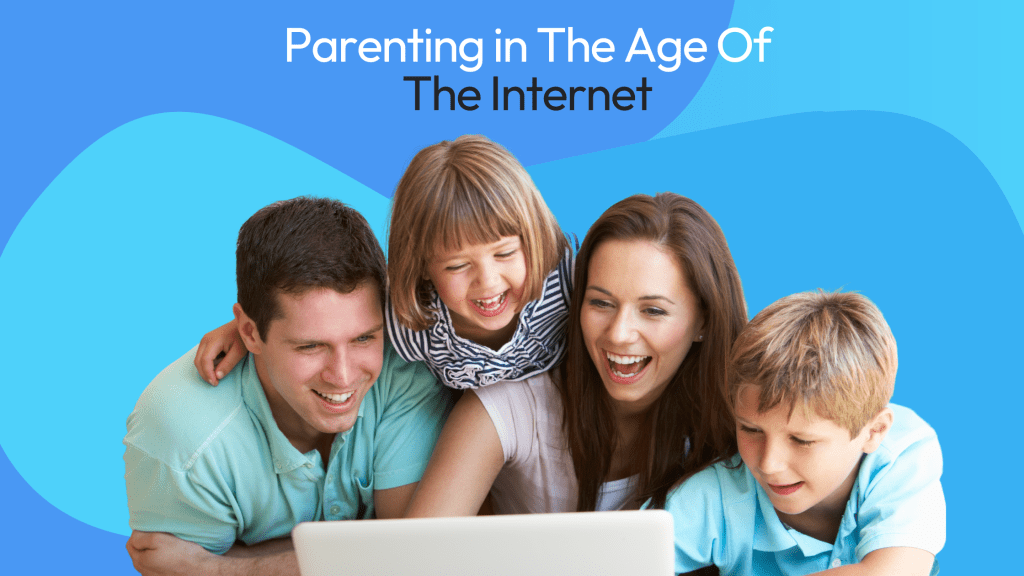Not sure how to parent in the age of the internet? You are not alone! Let’s get started.
About a month ago, I was planning to attend a virtual conference for the PTA at my kids’ school, because, as a PTA Board member, I am always looking for a way to advocate for kids and help out when I am able. I was given a slew of informative chats and meetings I could attend via Zoom, and, as I saw selecting which topics I was most interested in, I noticed a new trend. There were at least three sessions dedicated to the same topic:
cyberbullying.

Parenting in the age of the internet
Three chat sessions on cyberbullying may not seem like an extreme number, but, it’s still too many to a topic that is too relevant to parents today (One spoke to the story of Phoebe Prince, the 15-year-old whose death shocked the country after relentless cyberbullying).
No longer do we, as parents, just worry about the bullying that happens on the playground. Now, we worry about bullying around the clock.
With more and more children having access to devices connected to the internet, we now have to worry about who kiddos are chatting with virtually, generally without an adult present, and what is being said. Cyberbullying is a new frontier for many of us who didn’t grow up with the internet as a constant in our daily lives. It’s truly uncharted territory.
Kids and Devices
According to a 2019 article published in NPR, more than half of kids in the US have smartphones by age 11. My 11-year-old is in a small minority of students in her class level at school without a phone. Her dad and I have held out this long, but we realize a smartphone for our preteen is closer than we would like. We realize there are plenty of great reasons to give her a smartphone, namely that she would be able to contact us if need be no matter where she is. But it scares me.
She has recently downloaded TikTok onto my iPhone and regularly posts videos. Her account is private, and I get to approve anyone who wants to friend her. She has yet to inquire about other social media apps, many of which she regularly sees me using. I’m not in a rush for her to get them. To me, more apps in her name means more access to her, something that worries me.
We sat down when she got TikTok and talked about why her account needed to be private. Then we talked about what to do if someone private messages her. During that virtual PTA conference, I listened to two presentations about children whose lives ended because of cyberbullying. So I knew it was important that I warn my preteen of the possibilities and dangers before something happened that I couldn’t control. Kids ages 8 to 18 typically spent 7.5 hours per day tethered to their devices… likely more now that so many are virtually schooling. Let that sink in. And then decide where and when to start a discussion about cyberbullying with your kiddos.
Talking points about cyberbullying
- Tell your child that, on the internet, there is no such thing as privacy. It doesn’t exist. Tell your kids that if they wouldn’t show a picture they took to their parents or grandparents, they shouldn’t show it to anyone online. The same goes for things that are typed or said. If your child wouldn’t say it to an adult it should not be typed online. Anything can be captured with a screenshot, so it can still exist in the cyber-world even after you hit delete.
- Talk to your child about the importance of not speaking to strangers online. The same way we teach our kids not to talk to strangers at the park or get in a car with a strange person, we need to teach our children that they should not engage in conversations online with strangers. Remind them that, online, anybody can be anything, and, even if the person you are chatting with sends you a photo of themselves, there is really no way to know for sure if that is who they truly are.
- Tell your child that there will be regular phone checks where you will go through their social accounts and text messages. Do the same on the laptop or tablet. Remind them that it isn’t about punishment, it’s about protection. Remind them that life rules apply to the internet, too. Just like we have to make safe choices everyday in real life, for example, we look both ways before we cross the street, we always wear our seat belts, we have to have safety checks for our online lives, too. Our actions in cyberspace have real-life consequences.
Keep the conversation about cyber safety going regularly. Encourage your child to come to you if she is being bullied online or knows someone who is. Lastly, if you need help with cyberbullying and don’t know where to turn, try the CyberBullying Hotline set up by the US Department of Health and Human Services at 1-800-273-8255
Sources: